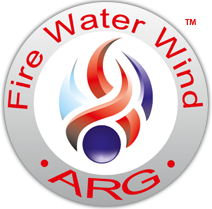
Beyond the severe visible damage that fires cause, the resultant smoke and soot that may not be as obvious can create serious additional problems.
American Restores Group carefully inspects the entire site for areas of concern or potential damage at the outset of restoration.
Cleaning with cold?
Yes, that's right! Cleaning with below freezing dry ice. This new development is quickly expanding around the world. One system uses small hard pellets of dry ice the size of rice shooting them out of a jet nozzle with compressed air. Yet the dry ice is softer than sand or glass beads, so it doesn't spoil the substrata. It works somewhat like sandblasting or high-pressure water or steam blasting, but with different results - often better. The frigid temperature of the dry ice -109.3°F or -78.5°C "exploding" against the material to be removed, causes it to shrink and loose adhesion from its sub surface. Additionally when some of of dry ice penetrates through the material to be removed, it comes in contact with the underlying surface. The warmer sub surface causes the dry ice to convert back into carbon dioxide gas. This gas has 800 times greater volume and spreads out underneath the material which speeds up its removal. Paint, oil, grease, asphalt, tar, decals, soot, dirt, ink, resins, jet exhaust tars, and adhesives, are some of the materials removed by this procedure. Only the removed material must be disposed of, as the dry ice sublimes into the atmosphere. Another system shaves dry ice off a block of dry ice and then sprays it in a wider pattern cleaning faster than sand blasting ever could.
Prior to repainting old corroded flaking surfaces, dry ice blast cleaning is the superior way to both clean and prepare the surface for its new coating. The surface is immediately available to paint - no waiting for drying or dangerous solvents to be removed.
- We restore damaged structures to their original state - whenever possible.
- We clean damaged contents on-site or through our in-house facilities.
- We deodorize the affected area.
- We remove soot, debris and damaged contents.
- We repair structural damage.
- We secure fire areas with board-up operations.
